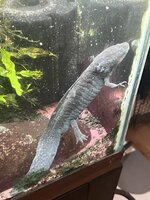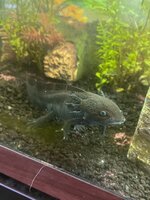slipperem
New member
I have 3 axolotls, male, living in a chilled 55 gallon and eating, healthy, active, all that good stuff. They never nip each other or have conflict. I know their gills could be fluffier but I'm doing my best to keep their water as high quality as possible. However, one of them has much fluffier/longer gills despite being in the same exact water. The other one is 6 years old and has just never had long fluffy gills no matter how hard I've tried and how good the water parameters are - just fluffy nubs always. I know genetics are a component and he was an abused, backyard bred rescue and the other was from a high quality breeder. He also had his gills cannibalized as a baby at his breeders. Could genetics/scarring be the culprit or is he just more sensitive to water quality? It has never seemed to affect him negatively in any other way. Please be kind.


